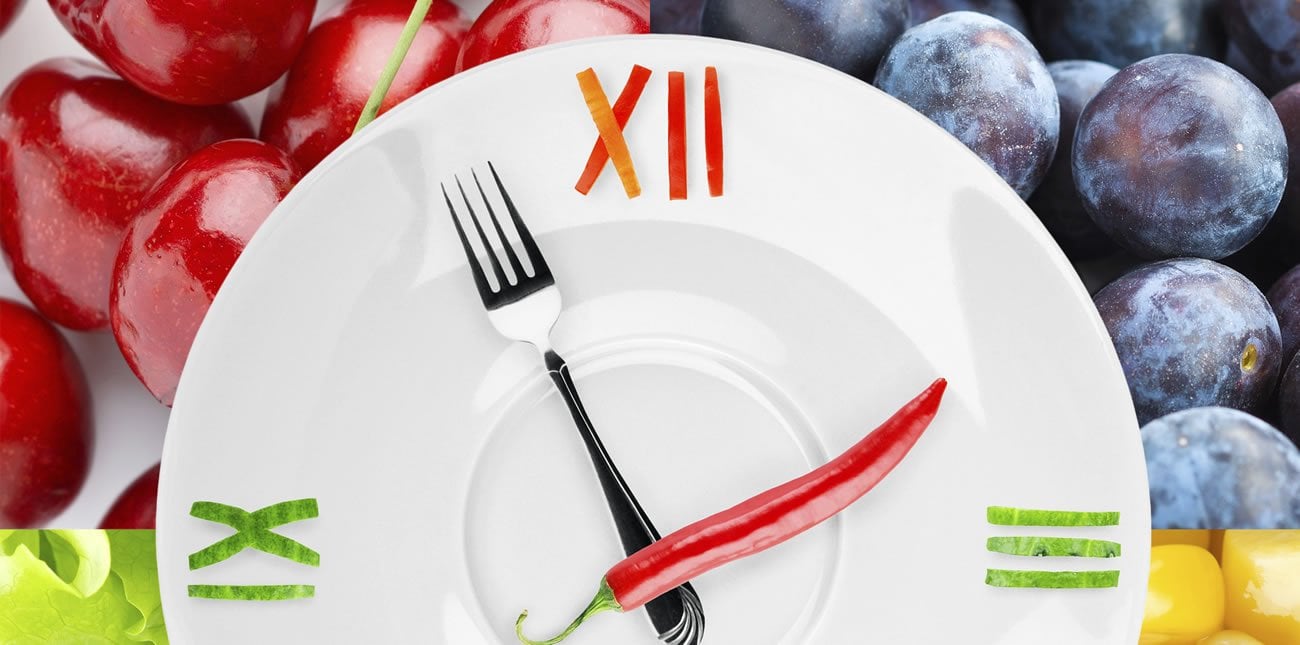The Hunger Scale: Mindful Eating for Weight Loss
Discover The Hunger Scale, and the best mindful eating tips for weight loss and better health, taught by the physicians, dietitians, psychologists, and other lifestyle experts at the renowned Pritikin Longevity Center in Miami. Did you know that how you’re eating may be just as important as what you’re eating.

My husband loves his big green salads, apples, bean soups, oatmeal and other whole grains, potatoes, and salmon. Yes, he’s a good Pritikin boy.
There’s only one problem. “I love them too much,” he laughs. He has a hard time pushing away from the dining room table. When he finally gets up, he’s not just full, he’s stuffed.
He’s also had a hard time lately shedding a few extra pounds.
Weight Loss Mistake
Chances are, he’s making a basic weight loss mistake. He’s not in touch with when he should start eating, and when he should stop.
Yes, how we eat can be as critical as what we eat.
“The fact is, we can get fat eating healthy food,” warns Dr. Danine Fruge, Associate Medical Director at the Pritikin Longevity Center + Spa. “If we’re overeating, if we’re, well, making pigs of ourselves, the pounds can pile up.”

Learn More About Pritikin
Mindful Eating For Weight Loss
The solution involves two key weight loss tips, teaches Pritikin faculty like dietitian Kimberly Gomer in classes at Pritikin on Mindful Eating.

First, we must practice recognizing our own personal hunger and satiety (“I’m getting full”) signals. Second, we need to act on them.
If you’re scratching your head right now, confused about what we’re talking about, you’re not alone.
Many people are out of touch with their body’s hunger and satiety signs, and it’s no wonder. Everywhere we go these days – every gas station, street corner, and office – we’re tempted with 40-ounce sodas, burgers at the drive-through, and cookies at our co-worker’s desk. We no longer ask ourselves, “Am I hungry?” “Am I full?” We just reach and nosh. And nosh and nosh.
Now, if you’re reading Pritikin newsletters, chances are you’re no longer stuffing yourself with cookies, and that’s wonderful. But if you’re eating healthy food till you’re ready to burst, you could end up gaining rather than losing weight.
That’s why it’s so important to re-learn our hunger and satiety alerts. We say “re-learn” because we were born with these cues. Most babies and toddlers just naturally eat only when they’re hungry, and stop when they’re full (not stuffed).
To help you become re-acquainted with your body’s natural cues, and give your weight loss efforts the best chance for success, an easy tool that Pritikin dietitian Kimberly Gomer and other faculty at Pritikin teach is The Hunger Scale…
The Hunger Scale
-
Starving – Ravenous – Weak – Grouchy!
-
Uncomfortably Hungry
-
Very Hungry – “I’m ready to eat now.”
-
A Little Hungry
-
Not Full But Not That Hungry – “My mind is on things other than food.”
-
Satisfied and Light – “I could eat more but…”
-
Comfortable But Slightly Too Full
-
Very Full – “I ate more than I needed.”
-
Too Full – Feeling Heavy and Uncomfortable
-
Thanksgiving Dinner Full – In A Food Coma!
How To Use The Hunger Scale
-
Don’t wait till No. 1 (Starving, Ravenous) or No. 2 (Uncomfortably Hungry) to start eating.
If you do, these are the kinds of thoughts and feelings you’re bound to have:
“I’m so famished I’m gonna drop.”
“I can’t get my mind off cheeseburgers.”
“I’m pulling into a fast food joint the minute I see one!”Yep, all hell’s broken loose. Any rational desires for healthy, low-calorie-dense foods have been overwhelmed by biologically propelled cravings for rich, calorie-packed fare.
-
Start eating at No. 3 (Very Hungry – “I’m ready to eat now.”)
You want to feel some hunger pangs but still have control over what you will eat. The best foods for weight loss, like a bowl of Pritikin Black Bean Soup, a big apple, or a baked potato with salsa, sound like options you’d be happy with.
Once again, don’t wait till you’re starving, irritable, dizzy, and shaky. If you do, your next steps will likely be steps away from your health and weight loss goals.
-
Stop eating at No. 6 (Satisfied and Light — “I could eat more but…”)
You could eat more, but if you did, you’d lose that lovely feeling of lightness and likely end up bloated, your pants too tight.
That’s because it takes about 20 minutes after you’ve eaten for your brain’s satiety signals to kick in. If you get up from the table when you’re close to full, 20 minutes later you will feel full, but not overly so.
If you stop eating when you’re a little too full (No. 7), you’re going to feel real full 20 minutes later. “And we all know that feeling,” smiles Kimberly. “In just minutes, we’ve gone from ‘I’m feeling fine’ to ‘Ah geez, I feel so big I need to loosen my belt.'”
-
Don’t Starve, and Don’t Stuff.
Staying in The Hunger Scale range of No. 3 to No. 6 (the green highlighted area in the scale) will help you follow what our doctors and dietitians at the Pritikin Longevity Center have taught for nearly 40 years: Don’t starve, and don’t stuff.
The result is not only a thinner body, it’s a happier one. “When people are in tune with their hunger and satiety signals,” explains Kimberly, “they feel better, lighter, and they often have a lot more energy throughout the day.”
They’re aren’t falling into what our Pritikin guests jokingly (and knowingly) refer to as food comas, those “I-ate-so-much-I-need-a-2-hour-nap” feelings.
The fact is, food comas are no fun in the long run. For 5 minutes of stuffing pleasure, we often get 5 hours of feeling crummy and fatigued.
“Real pleasure is being able to spend our days feeling vibrant and alive, and that’s what paying attention to our hunger and satiety cues can help give us,” sums up Kimberly.
More Weight Loss Tips For Using The Hunger Scale…
-
Weak appetite?
Sometimes during the day, you might go for hours without feeling hungry. A weak appetite may be the result of stress or vigorous exercise.
But it may also mean that you ate too much at your previous meal or snack, including the meal you had the night before. The next time you eat, try eating only until you are close to full (No. 6 on The Hunger Scale), not until you are stuffed.
-
“Hunger is the best sauce.”
Researchers have found that when people wait till they’re hungry (No. 3 on The Hunger Scale) to eat a snack, that snack provides more pleasure and satisfaction than when the same snack is eaten when people are not hungry. There may be truth, in short, to that old saying: “Hunger is the best sauce.”
-
Come up for air.
In the middle of each meal, pause and identify your satiety level. (So yes, eat slowly. Don’t gulp down your meal in 5 minutes. Enjoy it.) Half-way through, take a deep breath, put down your fork, and ask yourself: “Where am I? What’s my satiety level?” If you’re at No. 6, it’s time to stop.
-
Practice, practice, practice.
Getting in touch with your hunger and satiety signals takes practice. People don’t automatically become mindful eaters. “We’re all works in progress,” acknowledges Pritikin dietitian Kimberly Gomer.
But one key way to make good progress is to stop eating while doing other things, like working at the computer, watching TV, reading, or driving. When we’re involved with other activities, we’re not aware of our appetites. Often, we’re not even aware we’re eating, so is it any surprise that we tend to overeat?
Finally, and maybe most importantly, when our mind is on other things, we don’t enjoy our food as much.
-
Mindful Eating For Weight Loss: Summing Up
Get into The Hunger Scale habit. Banish the basic weight loss mistake of waiting till you’re starving to eat, then overeating when you start.
With every meal and snack, practice staying in the range of No. 3 (Very Hungry) to No. 6 (Satisfied and Light).
Then watch stubborn pounds disappear.
And energy levels soar.
